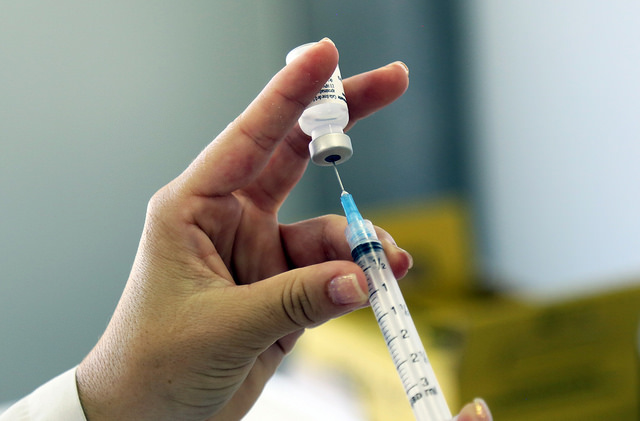
Photo credit: Pan American Health Organization, Creative Common license
Shingrix is a new vaccine approved to prevent shingles. What’s shingles? Should you get this vaccine? What if you already had a vaccine for shingles? Good questions. Read on.
To understand shingles, we have to understand chicken pox. Chicken pox was an extremely common childhood illness before 1995, when routine vaccination for chicken pox began. Before that, an average of 4 million people got chicken pox each year in the U.S. and about 100 people died. Chicken pox is caused by the varicella zoster virus. Varicella zoster virus is never cleared from the body. After causing chicken pox it persists in the body forever. Years or decades after the initial illness the virus can become reactivated, causing a painful linear blistering rash. It is this reactivation and the painful rash that results that is called shingles. (The medical term for shingles is herpes zoster.) Shingles typically lasts about two weeks and then resolves, but sometimes the patch of skin that is affected remains permanently painful, a condition called post-herpetic neuralgia. Post-herpetic neuralgia happens most commonly in older patients and can be debilitating.
In an effort to prevent post-herpetic neuralgia, Zostavax, a vaccine to prevent shingles was developed and approved in 2006. It was recommended to everyone over 60 who previously had chicken pox. But Zostavax has some drawbacks. First, it is much less effective in older patients. It is 64% effective for patients who receive the vaccine in their 60s, but only 18% effective for patients who receive it when older than 80. Second, immunity offered by Zostavax wanes quickly. Eight years after inoculation immunity wanes to 4%. Finally, because it is a live vaccine, it can not be given to immunocompromised patients, such as patients who are taking immunosuppressive medications for rheumatologic diseases or after organ transplants.
Several months ago, Singrix, a new vaccine to prevent shingles was approved. Shingrix eliminates many of Zostavax’s flaws. It is 97% effective at preventing shingles, and is equally effective in younger and older patients. And it is not a live vaccine, so immunocompromised patients can have it. The duration of Shingrix is not yet known, but preliminary studies suggest that protection should last at least 9 years after vaccination.
Though Shingrix is an important step forward in effectiveness, it is less convenient and causes more frequent side effects. Shingrix requires two shots given 2 to 6 months apart, and is more likely to cause redness, swelling, and pain at the injection site. These side effects are not dangerous but might make patients who are ambivalent about vaccination skip the second dose, thereby missing out on the full effectiveness of the vaccine.
Shingrix is approved for everyone over 50, including those who have Zostavax. Many pharmacies are carrying it and can administer the shot, and it’s covered by some insurances. I’ll be recommending it to all my patients over 50 when their annual exams come up, and my wife and I will get it soon.
Of course, in about 30 years the first kids vaccinated against chicken pox will be turning 50, and then hopefully both chicken pox and shingles will be consigned to history books.
Learn more:
C.D.C. Panel Recommends a New Shingles Vaccine (New York Times)
CDC recommends new shingles vaccine to replace older one (CNN)
No Excuses, People: Get the New Shingles Vaccine (New York Times)
Shingles (Herpes Zoster) (Centers for Disease Control and Prevention)
What Everyone Should Know about Shingles Vaccine (Shingrix) (Centers for Disease Control and Prevention)
Shingrix – An Adjuvanted, Recombinant Herpes Zoster Vaccine (The Medical Letter, by subscription only)

